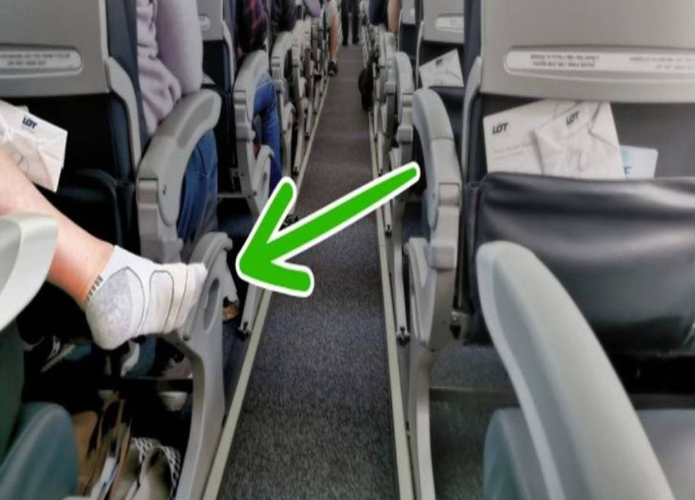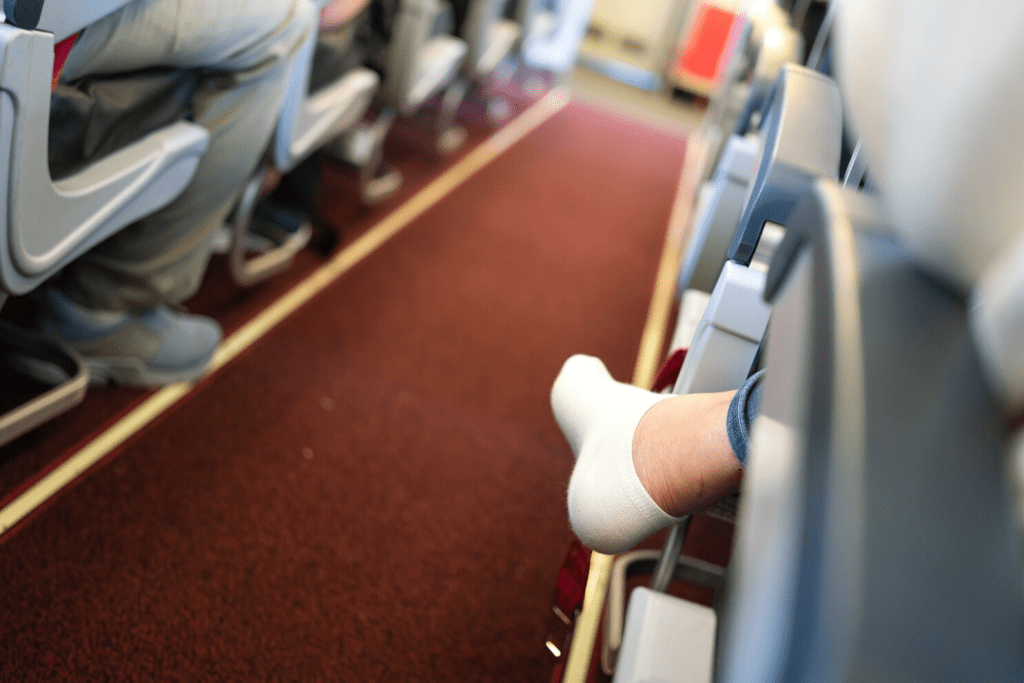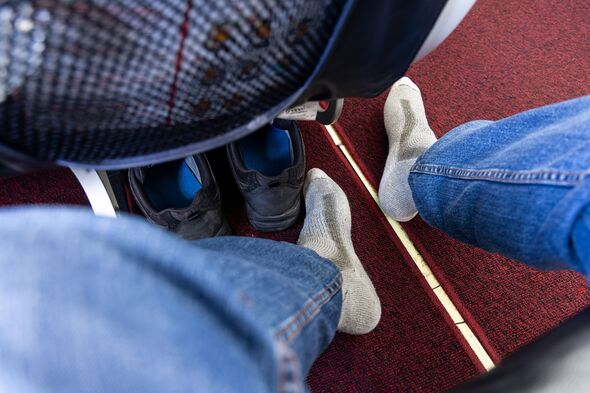Taking off your shoes on an airplane might seem like a comfortable choice, especially on long flights. But before you kick back and let your feet breathe, there are several reasons why you should reconsider this seemingly innocent act. Whether it’s a matter of etiquette, hygiene, or safety, keeping your shoes on during a flight can make a world of difference—not just for you, but for your fellow passengers too.
Respect Your Fellow Passengers: The Etiquette of In-Flight Footwear

The confined space of an airplane makes sharing a small area with dozens of people unavoidable. In such a setting, maintaining a pleasant environment for everyone becomes crucial. Removing your shoes can be seen as disrespectful to others because not everyone is comfortable with the sight or smell of bare feet in close quarters.
Did you know that each foot has about 120,000 sweat glands? That’s a lot of potential for moisture—and odor. When shoes come off, unpleasant smells can quickly spread, making it uncomfortable for nearby passengers. While airlines don’t explicitly ban passengers from taking off their shoes, practicing good manners can go a long way in keeping the cabin atmosphere pleasant. After all, no one wants to deal with stinky feet at 30,000 feet.
You Might Struggle to Put Your Shoes Back On
Think about this scenario: You’ve taken off your shoes, settled into your seat, and the flight is nearing its end. Suddenly, the announcement comes on—it’s time to prepare for landing. With the cramped legroom and restricted movement, putting your shoes back on becomes a hassle. Now, you’re awkwardly trying to squeeze your feet back into your footwear while the person next to you tries to reclaim their personal space.
The limited legroom on most flights makes it challenging to bend down and maneuver properly. As the plane prepares to land, you’ll need to sit upright with your seatbelt fastened, leaving little room to move. Struggling to put your shoes on quickly can be frustrating, especially when you’re trying to disembark in a hurry. So, keeping your shoes on from the start ensures a smoother transition when it’s time to deplane.
Hygiene Concerns: Airplanes Aren’t as Clean as You Think
Despite the efforts of airline staff to maintain cleanliness, the reality is that airplane floors can be pretty dirty. The cabin floor accumulates a surprising amount of bacteria, especially given the high turnover of passengers on each flight. Between flights, cleaning usually involves little more than a quick vacuuming or trash pickup, leaving the floor far from sterile.
When you walk barefoot on the airplane floor, you expose your feet to germs, dirt, and even spilled liquids from previous passengers. The risk multiplies when you step into the airplane restroom barefoot. These restrooms may seem clean, but they’re often just given a quick wipe-down between flights. The floor can still harbor bacteria, making walking barefoot there risky for your health.

Emergency Situations: Bare Feet Could Put You at Risk
In the rare event of an emergency evacuation, wearing shoes becomes crucial. Imagine the chaos that could ensue if passengers were scrambling to find their shoes in the middle of a crisis. Barefoot passengers trying to exit quickly would face additional hazards, such as sharp debris, hot metal, or slippery surfaces.
Scattered shoes can also obstruct evacuation pathways, delaying the process of getting everyone to safety. Keeping your shoes on ensures you’re prepared to move swiftly and safely if needed. While the chances of an emergency are low, it’s always best to be prepared rather than caught off guard.
Consideration and Comfort: Finding a Balance
It’s true that wearing shoes for an entire flight can feel restrictive, especially on long-haul trips. But you don’t have to choose between comfort and courtesy. There are simple solutions that let you stretch your legs while respecting others. If you’re concerned about discomfort, consider bringing a pair of clean socks or slippers to change into during the flight. This compromise allows you to feel comfortable while maintaining hygiene and politeness.
Additionally, many airlines provide slippers or foot coverings to passengers in first or business class, along with shoe bags to keep things tidy. This is an excellent option for longer flights when comfort is a priority but the risk of disturbing others is minimal due to the extra personal space in premium cabins.
Keeping Your Feet to Yourself: Avoid Unwanted Contact

Airplane cabins are not designed for sprawling out. It’s a shared space that demands a degree of mindfulness. Some passengers not only remove their shoes but also prop their feet up on windows, tray tables, or even other passengers’ seats. This behavior is not only impolite but also unhygienic, as surfaces like tray tables are often used for eating and working.
By keeping your feet to yourself and wearing shoes or socks, you show respect for others’ space and comfort. It’s a small act of consideration that can go a long way in making the flight experience better for everyone.
Conclusion: Think Twice Before Taking Off Your Shoes on a Plane
Taking off your shoes during a flight might seem like a harmless way to get comfortable, but it can cause a series of issues for you and your fellow passengers. From unpleasant odors and hygiene concerns to potential safety risks during emergencies, there are plenty of reasons to keep your shoes on while flying. Being mindful of others and prepared for emergencies is essential when flying, especially in such close quarters.
So, the next time you board a plane, think twice before loosening those laces. Remember that a little consideration can make the skies friendlier for everyone on board.


